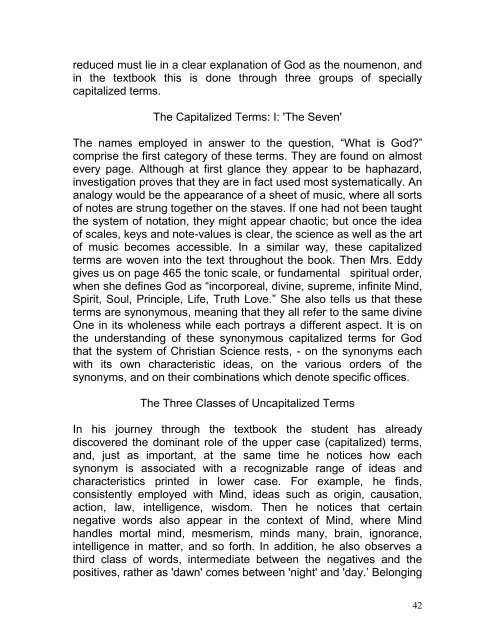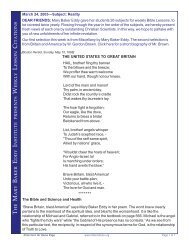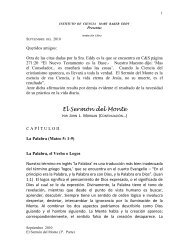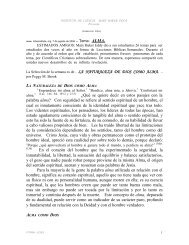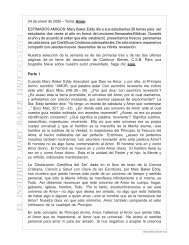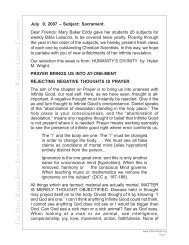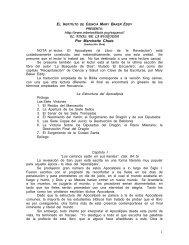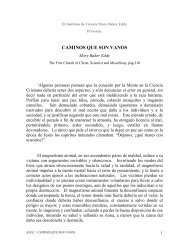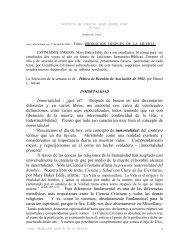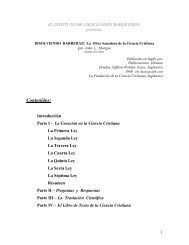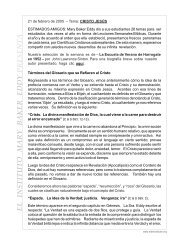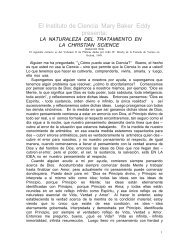SCIENTIFIC TRANSLATION - The Mary Baker Eddy Science Institute
SCIENTIFIC TRANSLATION - The Mary Baker Eddy Science Institute
SCIENTIFIC TRANSLATION - The Mary Baker Eddy Science Institute
You also want an ePaper? Increase the reach of your titles
YUMPU automatically turns print PDFs into web optimized ePapers that Google loves.
educed must lie in a clear explanation of God as the noumenon, andin the textbook this is done through three groups of speciallycapitalized terms.<strong>The</strong> Capitalized Terms: I: '<strong>The</strong> Seven'<strong>The</strong> names employed in answer to the question, “What is God?”comprise the first category of these terms. <strong>The</strong>y are found on almostevery page. Although at first glance they appear to be haphazard,investigation proves that they are in fact used most systematically. Ananalogy would be the appearance of a sheet of music, where all sortsof notes are strung together on the staves. If one had not been taughtthe system of notation, they might appear chaotic; but once the ideaof scales, keys and note-values is clear, the science as well as the artof music becomes accessible. In a similar way, these capitalizedterms are woven into the text throughout the book. <strong>The</strong>n Mrs. <strong>Eddy</strong>gives us on page 465 the tonic scale, or fundamental spiritual order,when she defines God as “incorporeal, divine, supreme, infinite Mind,Spirit, Soul, Principle, Life, Truth Love.” She also tells us that theseterms are synonymous, meaning that they all refer to the same divineOne in its wholeness while each portrays a different aspect. It is onthe understanding of these synonymous capitalized terms for Godthat the system of Christian <strong>Science</strong> rests, - on the synonyms eachwith its own characteristic ideas, on the various orders of thesynonyms, and on their combinations which denote specific offices.<strong>The</strong> Three Classes of Uncapitalized TermsIn his journey through the textbook the student has alreadydiscovered the dominant role of the upper case (capitalized) terms,and, just as important, at the same time he notices how eachsynonym is associated with a recognizable range of ideas andcharacteristics printed in lower case. For example, he finds,consistently employed with Mind, ideas such as origin, causation,action, law, intelligence, wisdom. <strong>The</strong>n he notices that certainnegative words also appear in the context of Mind, where Mindhandles mortal mind, mesmerism, minds many, brain, ignorance,intelligence in matter, and so forth. In addition, he also observes athird class of words, intermediate between the negatives and thepositives, rather as 'dawn' comes between 'night' and 'day.‟ Belonging42


